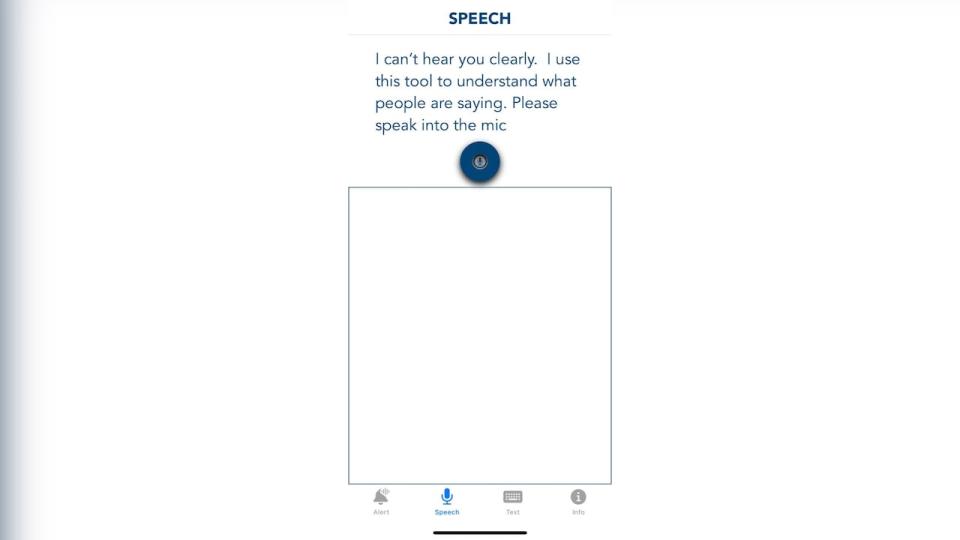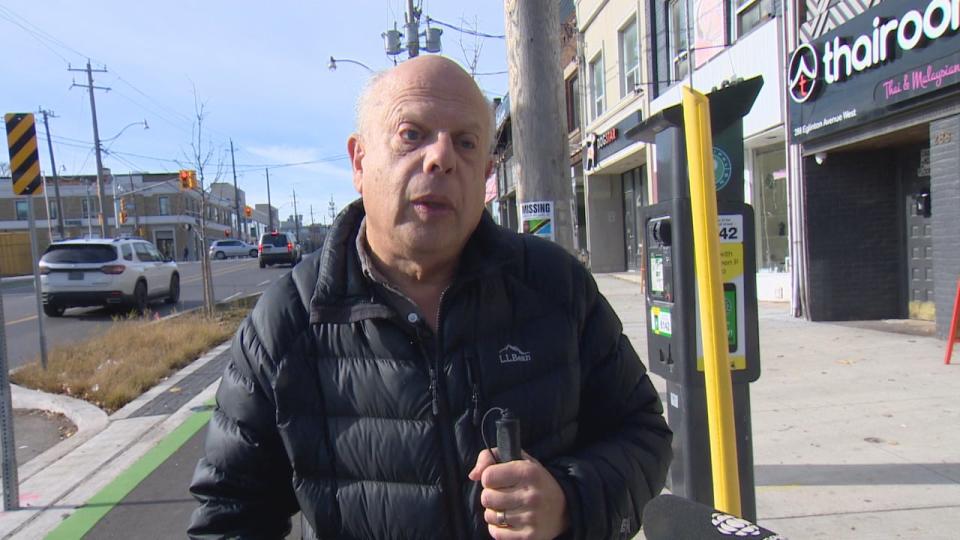Windsor entrepreneur hopes app can make a difference for people who are deaf, hard of hearing

Windsor entrepreneur Saamer Mansoor hopes the transcription app he's created can break barriers for people who are deaf or hard of hearing.
The 31-year-old was recently accepted to showcase his app, BeAware Deaf Assistant, at the Consumers Electronics Show (CES) in Las Vegas earlier this month — a show that brings together the latest technological breakthroughs and innovators.
The app's main purpose is to provide a real-time transcription of what is being so that a person who is hard of hearing or deaf can read the screen and know what is being said aloud. This feature can be used without internet and transcribes multiple languages.
There's also a setting that allows the app to pick up on loud sounds in a person's environment and alert them by flashing their phone's light to signal that there is a loud noise.

This is a screenshot of the app, BeAware Deaf Assistant. (BeAware Deaf Assistant app)
Both of these uses are free for people to use.
"People who are unemployed because of disability have disabilities that we can enable, if you provide a solution, you can essentially bring them into the workforce," he said.
"It has been a really gratifying journey."
Mansoor, who was born in Saudi Arabia, went to university in the U.S. and moved to Windsor four years ago. He had been working in app development and in 2021, he and a few friends brainstormed the idea. The following year the app launched.
"A lot of us had either family that is deaf and hard of hearing, we had friends who are in the Deaf community, we had taken sign language classes before, and so we had a lot of friends who were close to the community and that really helped us do our research essentially," said Mansoor.
In the last year, Mansoor has also added a conference captioning app, through which he charges institutions or businesses to use the service for lectures or large events.
This allows people in the audience who are hard of hearing to scan a QR code and get a transcription of what is being said, right to their phone.
Most recently, he says Michigan State University used his app for a graduation ceremony.
He says this feature of his app is what makes it different from other transcription services.
As of last month, Mansoor says they have 13,000 people across the world who are using the app.
A few months ago, he says he also launched a health scribe app, which can be used to transcribe for people in medical settings.
Each of his apps can also provide a translation into different languages if needed.
Mansoor says that at the CES he also took part in a Shark Tank casting call and anticipates he'll know whether he'll be part of the show by the end of January.
Tech advancements and accessibility
David Lepofsky, chair of the Accessibility for Ontarians with Disabilities Act Alliance, is not familiar with BeAware, but he uses technology to help him navigate his everyday life as someone who is blind.
He says there have been huge advancements in technology that have made every day life for people with disabilities more accessible.

David Lepofsky chairs the Accessibility for Ontarians with Disabilities Act Alliance. (Paul Smith/CBC)
In the early 1980s, he remembers using one of the first devices used to scan a book and read it out loud. He says it cost $50,000 US. And yet today, he uses an iPhone with free apps.
"The experience of living with vision loss has been completely redefined through emerging technology through my life," says Lepofsky who is also a visiting research professor of disability rights at the faculty of law at Western University.
But Lepofsky says that technology can also create barriers, which entrepreneurs need to be mindful of.
"So if someone releases a new iPhone app or web application, which is not designed to work with and interact with our access technology, not designed to be used with our screen reader on our phone or on a website, then what it amounts to is a series of new barriers, making things actually worse," he said.
Lepofsky says the solution to this is to "require by law and enforce the law that new technologies need to effectively accommodate the needs of all users, including users with disabilities."


